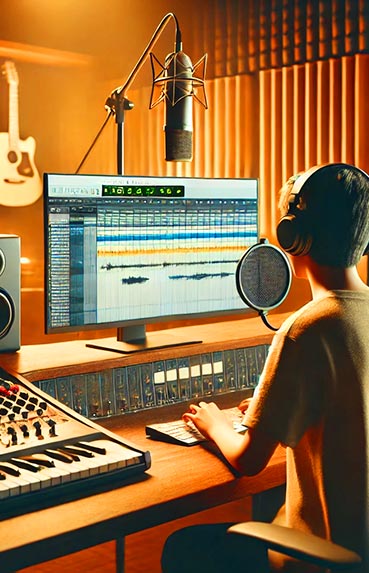In today's digital era, web design has become a crucial component for the success of any blog. An attractive and functional design not only draws more visitors but also enhances user experience and encourages engagement. However, with so many options and ever-evolving trends, it can be challenging to know where to start. This article breaks down the keys to creating a website that is both visually appealing and highly functional, providing practical tips and concrete examples to help you along the way.
The Importance of Web Design in Blogs
First Impressions Matter
The first impression a visitor has of your blog is crucial. A poorly executed design can lead users to abandon the site quickly, even before reading a single word of content. According to an Adobe study, 38% of people will stop interacting with a website if the content or design is unattractive.
Enhancing User Experience
Good web design significantly enhances user experience. Elements such as ease of navigation, loading speed, and mobile adaptability are essential to keeping users interested. A Google study shows that 53% of mobile users will abandon a page if it takes more than three seconds to load.
Key Elements of Web Design for Blogs
Intuitive Navigation
Navigation should be clear and simple. Visitors should easily find the information they are looking for. Consider implementing a fixed navigation menu that allows users to move around the site effortlessly.
- Use well-defined categories and subcategories.
- Include a site search feature to facilitate content access.
- Consider using a site map to improve overall structure.
Responsive Design
Responsive design is indispensable today. With the rise in mobile device usage, it's crucial that your blog looks good on any device. Use fluid designs that adapt to different screen sizes and ensure that images and videos are equally responsive.
Loading Speed
Loading speed is a determining factor in user retention. Optimize images, minimize the use of scripts, and consider using a content delivery network (CDN) to improve site speed. Tools like Google PageSpeed Insights can be helpful in identifying areas for improvement.
Visual Aesthetics
Color Palette
Choose a color palette that reflects your blog's identity. Colors should not only be attractive but also consistent with the tone and theme of the content. For example, a fashion blog might opt for pastel colors, while a technology blog might choose darker, futuristic tones.
Typography
Typography is a key design element that should not be overlooked. Choose fonts that are readable on all devices and screen sizes. Sans-serif fonts are often a good choice for body text, while serif fonts can work well for headings.
Images and Multimedia
High-quality images and multimedia content enrich the user experience. Use original photos and videos that complement the blog's content. Tools like Canva can help you create attractive graphics without needing to be a design expert.
Essential Features
Social Media Integration
Integration with social media is crucial for increasing visibility and engagement. Make sure to include social media sharing buttons on each blog post and consider implementing widgets that display your social profiles.
Comments and Feedback
Facilitate user interaction through an effective comment system. Comments not only increase engagement but also provide valuable feedback. Consider implementing plugins like Disqus or native comment systems to ease this interaction.
User interaction is a key indicator of success in blog web design. A design that promotes interaction through comments and social media not only enhances the user experience but also helps build a community around your content.
Security and Privacy
Security and privacy are fundamental to gaining user trust. Ensure your site is protected with SSL certificates and consider implementing clear and easy-to-understand privacy policies. Security plugins can help protect the site against common threats.
SEO Optimization
Optimized Content
Optimized content is key to improving search engine rankings. Use relevant keywords naturally and ensure the content is well-structured with clear headings and subheadings.
Internal and External Links
Strategic use of internal and external links can improve both SEO and user experience. Internal links help users navigate the site, while external links to authoritative sources can increase content credibility.
Meta Descriptions and Titles
Meta descriptions and titles play a crucial role in SEO. Ensure each page and blog post has a unique and engaging meta description, and use titles that are both descriptive and search engine optimized.
Tools and Resources
Web Design Platforms
There are numerous platforms that facilitate web design for blogs. WordPress is one of the most popular due to its flexibility and the vast number of themes and plugins available. Other options include Wix and Squarespace, which offer more straightforward solutions for those with less technical experience.
Analytics Tools
Analytics tools are essential for understanding user behavior and improving site design. Google Analytics and Hotjar are powerful tools that can provide valuable data on how users interact with your blog.
Learning Resources
Continuous improvement is key in web design. Stay up to date with the latest trends and technologies using online resources like design blogs, courses from platforms like Coursera or Udemy, and online communities where you can share and learn from other professionals.
Web design for blogs is an ever-evolving discipline that combines creativity and functionality. By following these keys, you can create a website that not only attracts more visitors but also offers an exceptional user experience and fosters engagement. With the right approach, your blog can become a valuable resource and an influential platform within its niche.

















